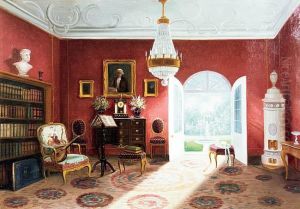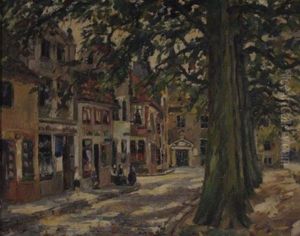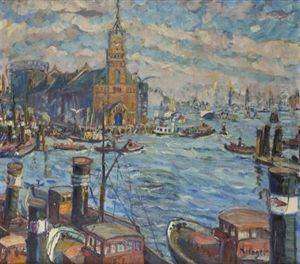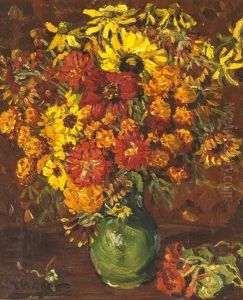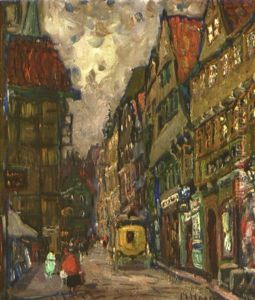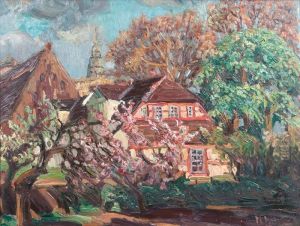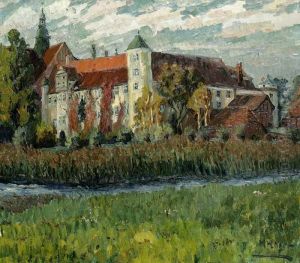Marie Hager Paintings
Marie Hager was a notable German painter born on May 30, 1872, in Bützow, Mecklenburg-Vorpommern, and passed away on December 6, 1947, in Schwaan. Her artistic journey is deeply intertwined with the landscapes and rural scenes of her homeland, which profoundly influenced her work throughout her career. Hager's artistic expression primarily focused on landscape painting, capturing the serene and bucolic essence of the German countryside with a remarkable sensitivity and attention to the subtleties of light and color.
Educated at the Women's Academy (Frauenakademie) in Munich, Hager was part of a generation of women artists who sought professional training and recognition in a male-dominated art world. Her education in Munich, a vibrant center for art and culture at the turn of the century, allowed her to immerse herself in the contemporary art scene, adopting and adapting various styles and techniques that she encountered.
Despite facing the challenges common to women artists of her time, including limited access to certain artistic circles and public commissions, Hager carved out a successful career. She was known for her dedication to capturing the changing seasons and times of day in her landscapes, showing a particular interest in the effects of light on natural forms. Hager's works are characterized by their vibrant colors, delicate brushwork, and the emotional depth with which she imbued her representations of nature.
Throughout her career, Marie Hager remained closely connected to her roots in Mecklenburg-Vorpommern. She was a key figure in the region's artistic community, contributing to the cultural life of her hometown and beyond. After her death in 1947, Hager's legacy continued through exhibitions and retrospectives that celebrated her contributions to German landscape painting. Her works are held in several public and private collections, serving as a testament to her skill and sensitivity as an artist. Hager's dedication to exploring and expressing the beauty of the natural world around her has ensured her a lasting place in the annals of German art history.
